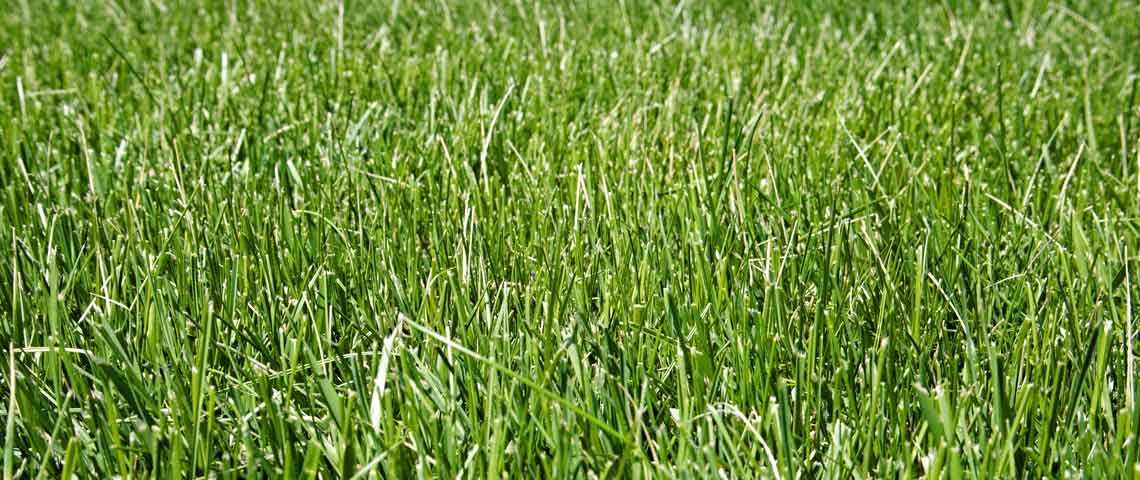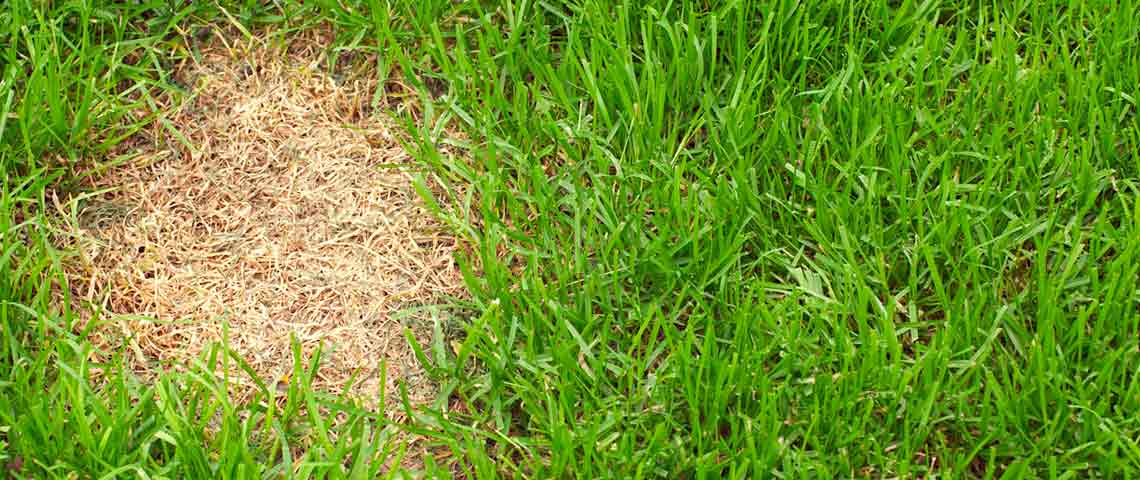All You Need to Know About Tall Fescue
Tall fescue is valued for its adaptability to a wide range of climates and its tolerances for cold, heat, drought and shade. In its preferred growing zones, tall fescue provides lawn owners with outstanding options for improving lawn resilience and durability. Depending on where you live and your lawn goals, this versatile grass may be an excellent choice for you.
- Tall Fescue at a Glance
- Tall Fescue Basics
- Additional Tall Fescue Characteristics
- Tall Fescue Lawn Care Calendar
Tall Fescue at a Glance
- Cool-season grass with improved heat tolerance.
- Suitable for northern and southern transition regions.
- Tolerant of heat, drought and shade.
- Disease resistant.
- Bunch-forming growth habit.
- Limited capacity for self-repair.
Tall Fescue Basics
Like many common U.S. lawn grasses, tall fescue originated in Europe. It was introduced to the United States in the early 1800s1 around the time that lawns became fashionable with early Americans. Even so, tall fescue remained relegated to agricultural use as a pasture grass until the mid- to late 1900s. Then a tall fescue variety known as Kentucky 31 made the leap from pasture to turf — and became an important part of Pennington Seed's history in the process.
In recent years, research and breeding programs have developed many new tall fescue lawn grass varieties known as turf-type and dwarf-type tall fescues. These modern tall fescue varieties, such as those in Pennington The Rebels Tall Fescue Grass Seed Blend and Pennington Smart Seed Southern Sun and Shade Grass Seed and Fertilizer Mix, offer darker green color, narrower blades and improved tolerances to heat, cold and drought. Pennington Kentucky 31 Tall Fescue Grass Seed remains a leading choice for lawn owners seeking economical, low-maintenance, heat- and drought-tolerant lawns.
As a cool-season grass, tall fescue is well-suited to northern lawns. But it also has added value in southern transitional turf grass regions where cool-season and warm-season grasses meet their climate limits. Tall fescue offers greater heat tolerance than other cool-season grasses and greater cold tolerance than warm-season grass options for these lawn owners. The result is beautiful year-round lawns in this challenging transition area.
Additional Tall Fescue Characteristics
Tall fescue tolerates shade better than all common cool-season lawn grasses except fine fescues. It establishes easily from seed and germinates more quickly than Kentucky bluegrass. Tall fescue's naturally extensive root system can reach 2 to 3 feet deep, much deeper than other cool-season grasses.3 This contributes to superior heat and drought tolerance.
Compared to ordinary grasses, tall fescue varieties from Pennington The Rebels Brand have 40% more roots. In addition, water-conserving Pennington Smart Seed tall fescues require up to 30% less water year after year than ordinary grasses do.
Unlike grasses that spread by horizontal above- and below-ground stems, tall fescue is a bunch-type grass. It grows in clumps and spreads primarily through vertical shoots called "tillers," which grow from the base of the grass plant itself. This growth habit makes tall fescue easy to contain and keep out of flower beds, but it limits its capacity to repair itself when lawn damage occurs.
Tall Fescue Lawn Care Calendar
As with other cool-season grasses, tall fescue grasses hit their peak growth periods during the cool fall and spring seasons. The best time to plant tall fescue or perform other major lawn tasks is during this peak growth period in fall and spring. To keep your northern or southern tall fescue lawn looking its best, time your lawn care tasks accordingly.
Remember, the farther south you live, the earlier spring lawn growth starts. Seasonal weather varies from year to year, so watch your lawn along with your calendar. If you're uncertain about your local spring and fall frost, check with your county extension agent. Then follow this tall fescue lawn care calendar for a versatile, resilient lawn.
MARCH THROUGH MAY
Mowing
Start mowing your tall fescue lawn as soon as spring growth begins. Mow as needed to maintain tall fescue's recommended height of 2 to 3 inches. Bag the season's first clippings to discourage the spread of snow mold or other fungal lawn diseases.
Weed Prevention and Fertilization
Prevent crabgrass and feed your established tall fescue lawn in early spring. Apply Pennington Full Season Weed & Feed with Crabgrass Control 25-0-8 before soil temperatures hit 55 degrees Fahrenheit and crabgrass begins germinating. Do not treat newly seeded or overseeded areas until at least 60 days after seeding.
Seeding and Overseeding
Spring seeding and overseeding help tall fescue lawns stay dense and avoid a clumpy look. For optimal germination, plant tall fescue when soil temperatures are between 50°F and 65°F. Most lawn and garden stores carry inexpensive soil thermometers to help you get timing right.
Bare Spot Repair
Fix damage in tall fescue lawns with Pennington Smart Patch II Tall Fescue Mix. Under proper growing conditions, this combination of premium Smart Seed grass seed, professional-grade fertilizer and mulch repairs bare spots fast. You'll see growth in as little as 5 days and full results as soon as two weeks.
Weed Control and Fertilization
Control emerged broadleaf weeds and feed established tall fescue lawns in late spring. Wait until grass and weeds are actively growing, then apply Pennington Full Season Weed & Feed with Crabgrass Control 25-0-8. If you already applied this product in early spring, you're set. Do not apply to newly seeded areas until new grass is mowed at least three times. After application, wait at least three weeks before overseeding.
Watering
Water your established lawn so it receives about 1 inch of water per week, including rainfall. Tall fescue's deep roots make good use of soil moisture. Deep, thorough irrigation supports deeper root growth.
JUNE THROUGH AUGUST
Mowing
Increase tall fescue's mowing height to 3 to 4 inches tall as summer heat and lower rainfall arrive. Never remove more than one-third of the blade at any one time.
Fertilization
Fertilize your tall fescue lawn with a split application of Pennington Full Season Lawn Fertilizer 32-0-5 in summer, if needed. Tall fescue makes excellent use of nutrients from soil and fertilizers.
Watering
Water as needed so your established lawn gets 1 to 1 1/4 inches of weekly water from irrigation and rainfall combined. To stay green during hot summer months in transition regions, tall fescue lawns require more water than warm-season grasses, such as Bermudagrass and Zoysia grass.
Pest Control
Treat insect pests such as grubs with Sevin Insect Killer Lawn Granules while they're young and close to the soil surface, before extensive grass damage occurs.
Soil Testing
Soil testing identifies your lawn's soil type, soil pH and nutrient needs so you can fertilize accordingly. Tall fescue prefers soil pH between 5.5 and 7.5.2 For soil pH outside that range, test results may recommend lime or other soil amendments.
SEPTEMBER THROUGH NOVEMBER
Mowing
As temperatures cool, gradually decrease tall fescue's mowing height back to 2 to 3 inches tall. In northern areas, continue until growth stops. Before winter, do one final mow at the lower setting. In southern regions, continue regular mowing.
Weed Control and Fertilization
Treat broadleaf weeds and prepare your established tall fescue lawn for winter. Apply a fall application of Pennington Full Season Weed & Feed with Crabgrass Control 25-0-8 six to eight weeks before your typical first fall frost. If you're seeding or overseeding thin tall fescue, avoid weed and feed products until spring. Instead, spot-treat lawn weeds and fertilize with Pennington Full Season Lawn Fertilizer 32-0-5.
Seeding and Overseeding
Early fall is the ideal time to seed or overseed northern and southern tall fescue lawns. Plant Pennington The Rebels Tall Fescue Grass Seed Blend or Pennington Smart Seed Southern Sun and Shade Grass Seed and Fertilizer Mix about 45 days before your typical first fall frost date. This helps tall fescue gets established before winter comes.
Watering
Reduce supplemental irrigation in northern lawns so that tall fescue lawn gets at least 1 inch of water every 10 to 14 days. Continue watering southern tall fescue lawns so they receive at least 1 inch of water per week.
Aeration and Dethatching
If needed, aerate lawns with a core aerator to reduce soil compaction. Timing aeration during peak fall growth helps tall fescue recover faster. Bunch-forming tall fescue lawns rarely need dethatching.
Leaf Management
Manage fallen leaves by raking or mulching to reduce the risk of winter lawn disease.
DECEMBER THROUGH FEBRUARY
Southern Tall Fescue Lawns
Continue maintaining your tall fescue lawn through the winter months. Maintain normal mowing heights of 2 to 3 inches. Supplement natural precipitation, as needed, so that your tall fescue lawn gets at least 1 inch of weekly water.
Northern Tall Fescue Lawns
Keep your tall fescue lawn free of toys, sticks, rocks and other winter debris. Flush areas damaged by pet urine or de-icing salts when soil thaws. This helps prepare bare spots for quick lawn repairs.
By giving your lawn a foundation of premium Pennington tall fescue varieties, you can enjoy thicker, lusher, more resilient grass from northern regions to southern transition zones. Pennington has been cultivating the trust of homeowners and lawn professionals for three generations with the finest grass seed possible. With Pennington tall fescue grasses, you benefit from better research, better seed and better results — guaranteed.
Always read product labels thoroughly and follow instructions.
Pennington, One Step Complete, Smart Seed and The Rebels are registered trademarks of Pennington Seed, Inc.
Sevin is a registered trademark of Tessenderlo Kerley, Inc.
Sources:
1. Duble, R.L., "Tall Fescue," Texas A&M Agrilife Extension.
2. Patton, A. and Boyd J., "Choosing a Grass for Arkansas Lawns," University of Arkansas Cooperative Extension.
3. Cook, T., "Tall Fescue," Oregon State University Department of Horticulture.




